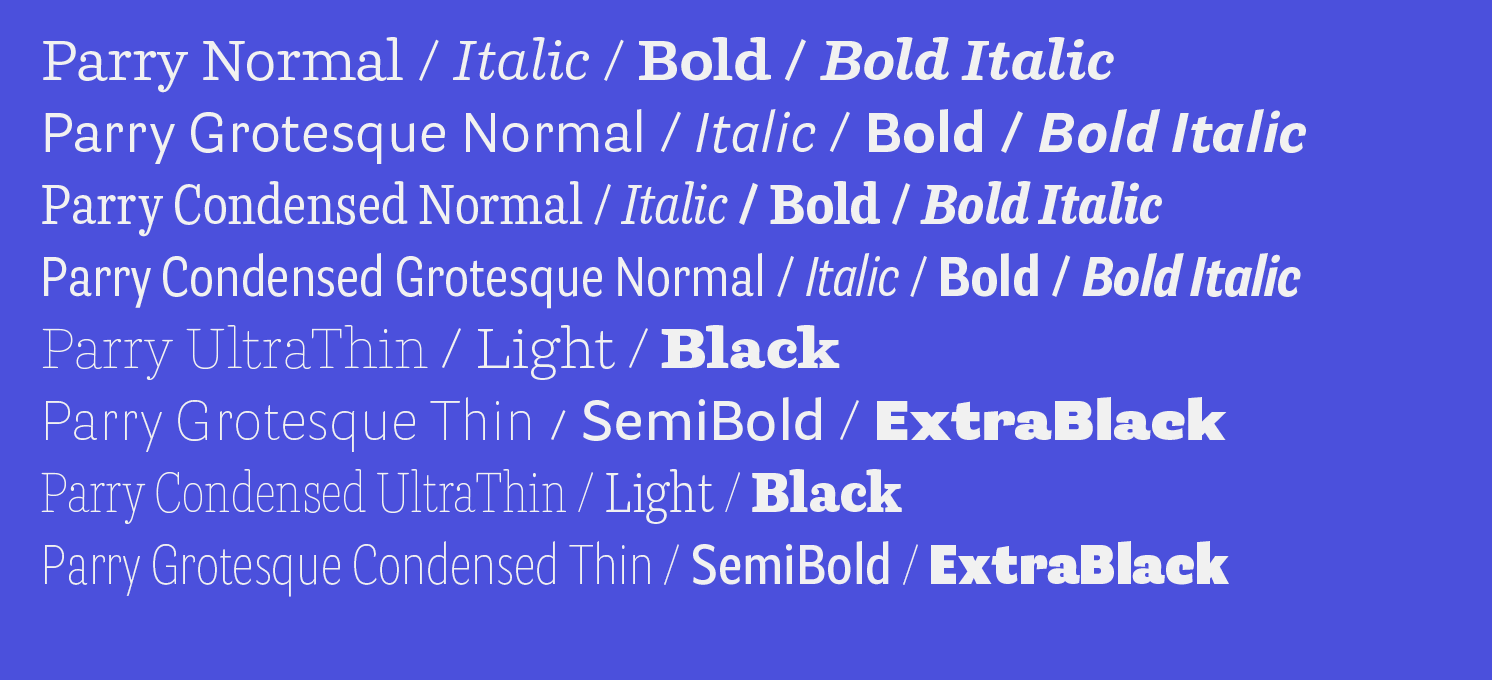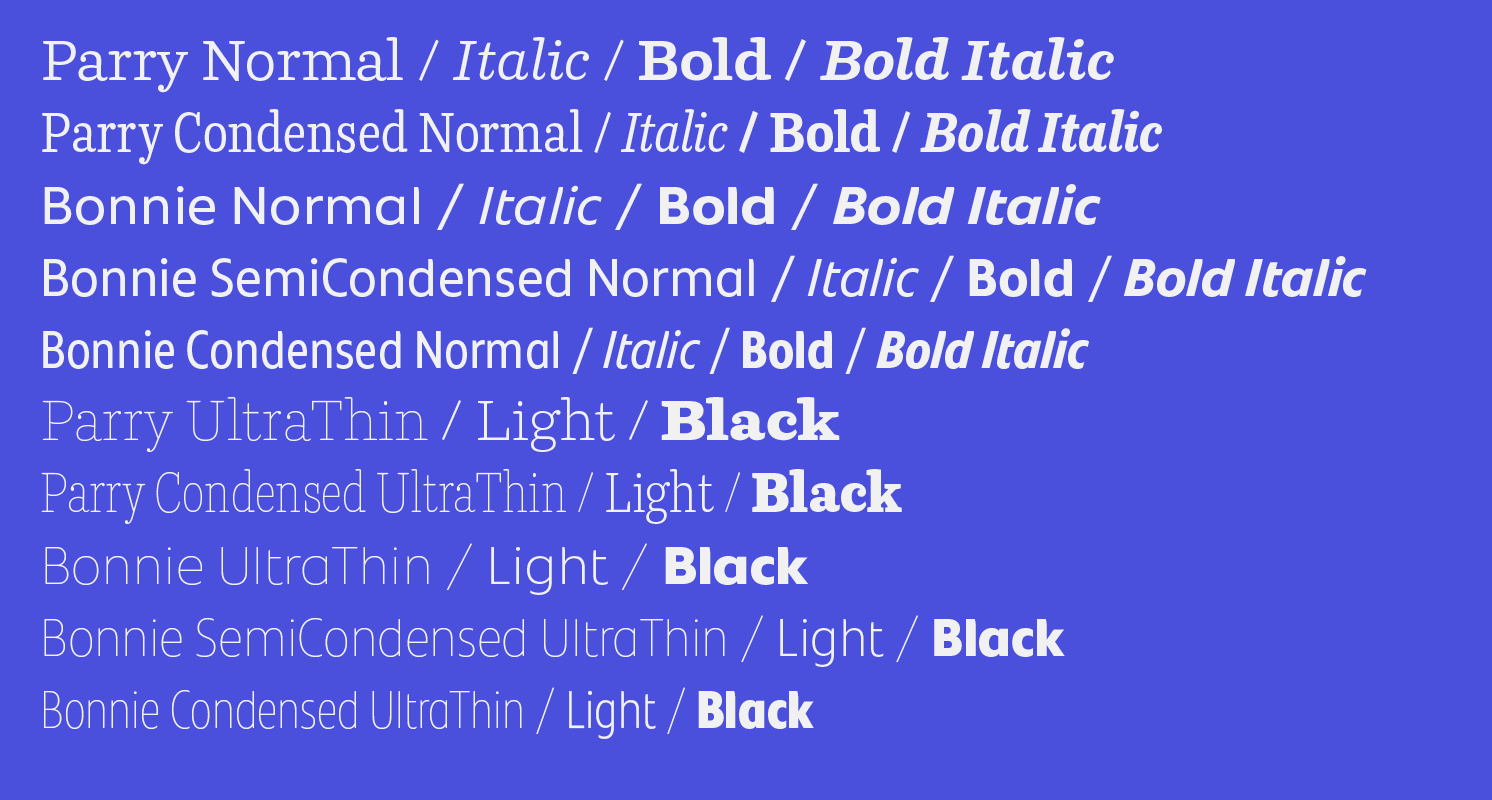Editorial Packs
Wether it is an scientific paper, newspaper catalogue, magazine or an annual report, editorial design projects demand special typographic needs. Often they require fonts from different font families. For this reason we’ve compiled several Editorial Packs that contain a selection from styles from different families in our collection. Each pack is designed to serve a variety of typographic needs. These packs offer great value for their price!
Parry Basic Editorial Pack / 12 styles
Starting at €119

Parry Extensive Editorial Pack / 28 styles
Starting at €229

Parry Bonnie Editorial Pack / 35 styles
Starting at €269

Character set
Language support
Afrikaans, Albanian, Asu, Basque, Bemba, Bena, Bosnian, Catalan, Chiga, Colognian, Cornish, Croatian, Czech, Danish, Dutch, Embu, English, Esperanto, Estonian, Faroese, Filipino, Finnish, French, Friulian, Galician, Ganda, German, Gusii, Hungarian, Icelandic, Inari Sami, Indonesian, Irish, Italian, Jola-Fonyi, Kabuverdianu, Kalenjin, Kamba, Kikuyu, Kinyarwanda, Latvian, Lithuanian, Low German, Lower Sorbian, Luo, Luxembourgish, Luyia, Machame, Makhuwa-Meetto, Makonde, Malagasy, Malay, Maltese, Manx, Meru, Morisyen, North Ndebele, Northern Sami, Norwegian Bokmål, Norwegian Nynorsk, Nyankole, Oromo, Polish, Portuguese, Romanian, Romansh, Rombo, Rundi, Rwa, Samburu, Sango, Sangu, Scottish Gaelic, Sena, Shambala, Shona, Slovak, Slovenian, Soga, Somali, Spanish, Swahili, Swedish, Swiss German, Taita, Teso, Turkish, Turkmen, Upper Sorbian, Vunjo, Walser, Welsh, Zulu
Buying options
First, please select your license types.
Combining licenses will give you a multi-license discount of 8%.
Next, select packages or individual styles
Buying packages or upright/italic pairs, will cost you less per font compared to buying fonts per style.
- 119 €
468 € - Contains a selection of 28 styles from the Parry, Parry Condensed, Parry Grotesque and Parry Grotesque Condensed families. See styles.229 €
1092 € - Contains a selection of 35 styles from the Parry, Parry Condensed, Bonnie, Bonnie SemiCondensed and Bonnie Condensed families. See styles.269 €
1155 €


